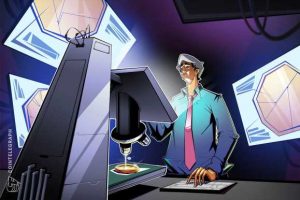Analysts warn of 'acute' Q3 slowdown in Robinhood's DOGE-reliant growth

Robinhood’s recent disclosure of the major boost that crypto has contributed to its second-quarter financial earnings is worrying some financial analysts, largely due to the “outsized” role that Dogecoin (DOGE) trading has played.
In an investor note this week, Wolfe Research’s Steven Cubak warned that “Robinhood’s growth within crypto is nothing short of remarkable, but the outsized contribution from Dogecoin simply cannot be ignored.”
As reported, Robinhood’s Q2 results revealed that crypto trading had surged to represent 41% of its revenue and that more than 60% of the app’s funded accounts traded crypto in the quarter. The company generated $233 million from crypto trading services for Q2 2021, up from $5 million for the entirety of 2020.
Related: Robinhood shareholders want crypto wallets and a hat
An astonishing 62% of Robinhood’s crypto revenue in Q2 2021 derived from Dogecoin trades during the meme currency’s major social media-fueled pump – representing close to a third of Robinhood’s total transaction revenue.
In his note to investors, Chubak traced this exponential growth in Dogecoin’s contributions to the company’s revenue, from 6% in Q1 2021 to the 26% mark by Q2. He added that trading volumes for Dogecoin have dropped by roughly 78% in Q3 and are now tracking below Q1 levels. He warned:
“We believe the 3Q slowdown could be much more acute than many investors were anticipating […] This may not phase fintech investors with a longer investment horizon but may give financial investors more conviction in the short thesis.”
Having launched its IPO this summer in an initially disappointing debut on Nasdaq, shares in Robinhood rapidly became so volatile that the stock exchange was forced to halt trading multiple times. Robinhood had itself done the same on its app in January, to popular outrage, as Dogecoin (DOGE) surged by 900%.
As of the time of writing, shares in Robinhood are down just over 5% on the day.
Source: Read Full Article
